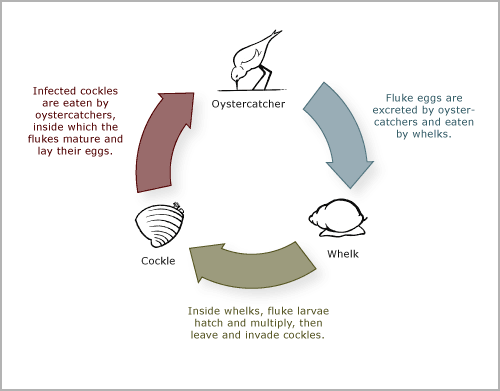
Parasitic flatworms are also known as flukes. One New Zealand species, Curtuteria australis, is a common parasite of shellfish and shorebirds. They start life as eggs that are passed out in the faeces of birds such as oystercatchers. If eaten by a mudflat snail, or whelk, the eggs hatch and the larvae multiply by budding. The tiny fluke larvae leave their whelk hosts and invade another shellfish, cockles. The larvae accumulate in the foot of cockles, preventing them burrowing into the mud to escape predation. The stranded cockles are eaten by oystercatchers. Once inside the bird, the flukes mature and produce fertilised eggs, and the cycle begins again.
Te whakamahi i tēnei tūemi
Te Ara – The Encyclopedia of New Zealand
Artwork by Bruce Mahalski
This item has been provided for private study purposes (such as school projects, family and local history research) and any published reproduction (print or electronic) may infringe copyright law. It is the responsibility of the user of any material to obtain clearance from the copyright holder.
Source: Robert Poulin, Going in circles: the complex transmission routes of parasites. Dunedin: University of Otago Press, 2004







Tāpiritia te tākupu hou